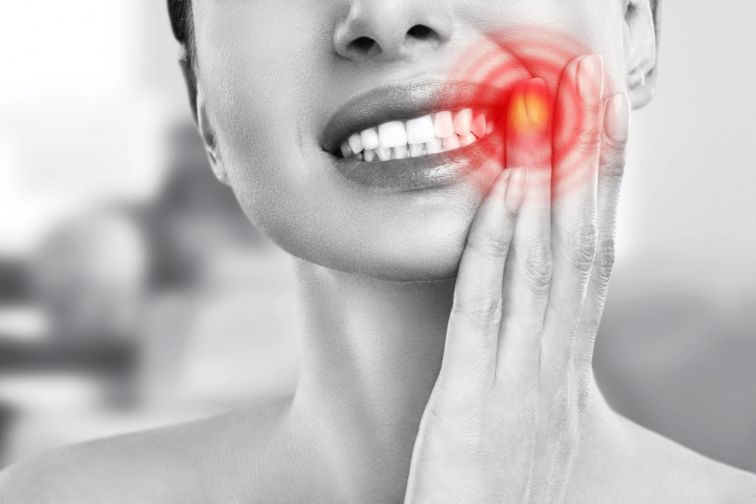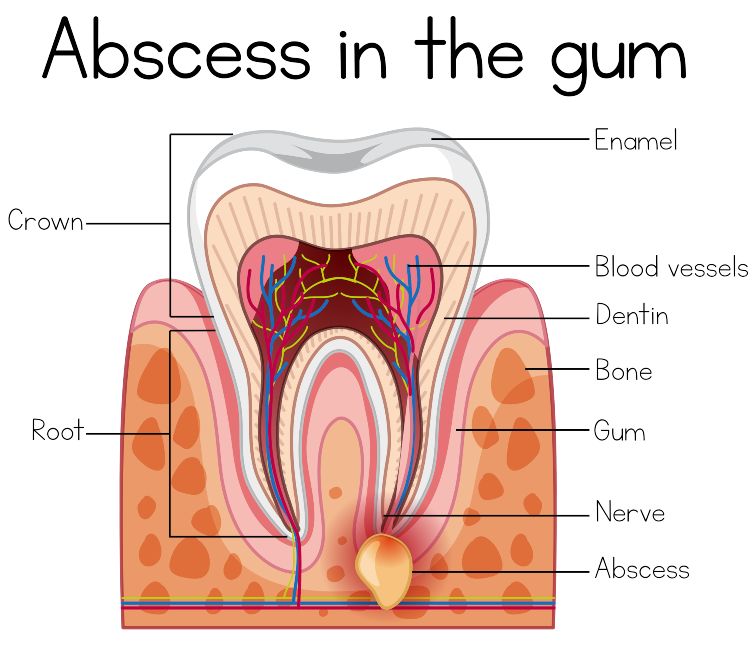When talking about teeth-related diseases or issues, people usually complain about cavities, tooth sensitivity, and wisdom tooth removal. However, there are plenty of other issues a person can experience when it comes to their teeth.
One of those “obscure” or rare conditions is definitely the dental cyst. For those who don’t know, a cyst is basically a sac of soft tissue or fluid that forms next to or around a tooth. People who have never heard of dental cysts or experienced dental cyst pain may consider themselves lucky.
However, patients who have had to deal with this condition, know how uncomfortable and painful it can be.
The best thing a person can do is to be properly prepared. Here’s everything patients need to know about dental cysts.
In most cases, cysts form at the tip of the roots of a dead or dying tooth.
When it comes to dental cyst causes, here are the most common ones:
Even though dental cysts are usually a result of some dental issue or infection, they can also be a symptom of a different disease.

That said, here are the dental cyst symptoms patients should look out for:
If a patient notices any of these symptoms and suspects that they might have a cyst, they should seek counsel from their dentist as soon as possible.
One of the most important things dental patients should know is that there are different types of cysts. Three types, to be specific - Periapical cyst, Dentigerous cyst, and Odontogenic Keratocyst.
Here are their main characteristics.
This is the most common dental cyst and has many names. Dentists may refer to it as a radicular cyst, apical periodontal cyst, root end cyst, or simply dental cyst.
This cyst is caused by the death or necrosis of the pulp tissue inside the tooth. Death of the pulp is usually a result of tooth decay or injury. When pulpal necrosis occurs, it causes inflammation and the release of toxins, usually at the end of the root tip, hence the name “root end cyst”.
In most cases, treatment isn’t too complicated. In order to heal the patient, the dentist has to apply endodontic therapy. In case this doesn’t work, the dentist has to remove the dead tooth. This is the only way for them to get to the cyst, remove it, and clean the infected area.
The best way to make sure the inflammation or infection won’t appear again is to fill the area with an artificial tooth.
To prevent cysts from forming again, dentists usually fill the retrograde root canal.
It should be stated that this cyst usually appears in the area of the lower wisdom teeth or the permanent upper canines. It forms around the crown of an unerupted tooth.
The thing that, in most cases, causes this cyst is the pressure an erupting tooth puts on the follicle. The pressure prevents the normal blood flow and that’s why fluid may accumulate between the enamel membrane tissue and the coronal portion of the tooth. This fluid causes inflammation and infection the result of which is often a dentigerous cyst.
Unfortunately, the only way to treat this cyst is to extract the tooth and surgically remove the cyst.
Patients are most likely to notice this cyst in the posterior area of the lower jaw or mandible. Even though it has a scary name, this cyst is pretty much similar to other dental cysts. However, in order for a dentist to be sure, they usually have to do a biopsy, microscopic analysis, and an x-ray.
Unfortunately, experts can’t specify the cause of this cyst, but there are several theories that might suggest the origin of keratocyst.
Some dentists believe the cyst appears in the place where the tooth should have been, in order to fill the area. The other experts think that this cyst is actually a tumor that arises from the lamina of an injured or dead tooth.
The only way for a dentist to treat this cyst is to remove it surgically. The cyst may appear again and that’s why dentists usually prescribe treatment after the surgery.

Dental cyst vs abscess is definitely the most common dilemma patients have when they experience painful swellings in the mouth.
Therefore, it’s crucial for patients to know that the main difference between dental cysts and abscesses is the infection. Most dental cysts are not infected, but if they get infected, they are called abscesses. Usually, abscesses occur in a dental cyst or near it.
The main cause of abscesses is bacteria in the gum. In most cases, this happens due to tooth decay. If a patient has a small abscess, they can treat it with antibiotics. However, large abscesses have to be removed by a dental surgeon.
The patients who suffer from this condition want to know how to get rid of dental cyst. There are many ways to do this, but the best ones are dental cyst surgery and dental cyst treatment (prescribed by a reputable dentist).
In most cases, antibiotic treatment will get the job done, but if the cyst is big or infected, a dental cyst removal is necessary.
The stories of cyst removal surgeries may seem a bit daunting, but fortunately, that’s not the only way for a patient to treat this condition. If the condition is mild and there’s no inflammation, patients can treat it with antibiotics for dental cyst. Also, in some cases, a dental cyst home remedy might be enough.
It doesn’t matter which treatment they choose, patients suffering from dental cysts and other infections should consult a trusted dentist.

